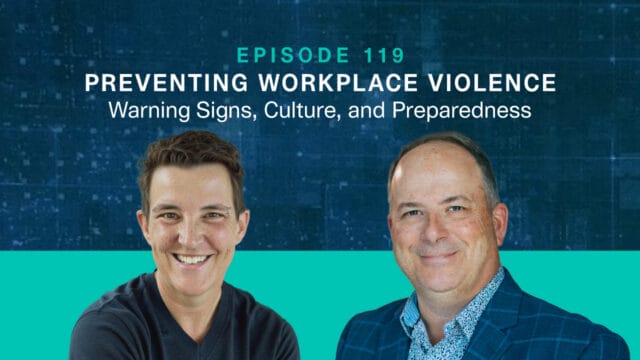
Get off the Couch, America: The Skilled Trades Need You!
The U.S. labor market is in the midst of a multi-decade identity crisis. Despite millions of available careers in the highly-paid skilled labor sectors, most working-age young Americans don’t see themselves in those jobs. What’s going on?

The U.S. job market is knee deep in an identity crisis.
On one hand, there are 9.8 million Americans looking for a job and a high 6.1% unemployment rate. According to the recent U.S. Department of Labor employment report, that’s well above pre-pandemic levels of 3.5% and 5.7 million, respectively.
And yet, it’s impossible to escape reports of the vast labor shortage across industries, called a “catastrophic inability to hire” by the New York Times.
Take the manufacturing sector, for example. They need to fill 570,000 jobs today — a task industry leaders say is 36% harder than it was before the pandemic, even though the unemployment rate has nearly doubled the number of available workers.
As we hit record number COVID-19 vaccinations, the global economy reopens, and 2020 and 2021 graduates compete for entry jobs simultaneously, the question remains: Why the discrepancy?
The answers aren’t hard to find.
Is Uncle Sam to Blame?
There are a number of reasons workers are hesitant to re-enter the workforce.
For one, caring for children or elderly parents is nearly impossible to do with a full-time job —nevermind during a pandemic. A large percentage of the nearly 3 million women who exited the workforce in the last year cite lack of childcare as the chief reason. Another 2.1 million who left the workforce are caring for an elderly person.
Fear of illness is another reason U.S. workers haven’t returned to work. Although 50% of U.S. adults are vaccinated, some still name fear of getting sick is another reason workers remain at home.
The majority of experts, however, have been quick to blame too-generous unemployment benefits and ongoing pandemic stimulus payouts for the widening gap in the job market.
The math is simple: Federal Pandemic Unemployment Compensation offers a $300/week supplement through September 2021 on top of state unemployment benefits. If you’re a resident of New York where the state’s maximum weekly benefit is $500, you can earn $800/week, or the equivalent of $20/hour for a 40-hour workweek. Minimum wage in NYC is only $15/hour.
Why get off the couch?
For this reason, employers are saying it’s become nearly impossible to attract and retain blue collar and skilled workers. Recent research suggests that every 10% increase in jobless benefits a person receives directly corresponds to a 3% decline in the number of jobs they apply to. Employers say their competition for quality workers is no longer other employers, but rather government stimulus benefits. It’s a fight they can’t possibly win.
What will it take to get 9.8 million Americans back on the job?
Lure workers back into skilled jobs with purpose and on-the-job training
The pandemic taught us multiple lessons.
For one, it spurred us all to re-evaluate our lives, careers, and what matters most. When re-entering the workforce, people are searching for meaning in their jobs. Workers don’t just want to be another cog in the wheel. They want to see the fruits of their labor and understand the bigger picture — how their work ultimately helps others.
The 4-year college degree is also under a magnifying glass for the first time in decades. How much should it cost to earn a bachelor’s degree? And if it doesn’t lead to immediate employment, is it worth it? Similarly, if education can be done successfully online, shouldn’t even elite institutions be open to a wider demographic of students in multiple forms?
I believe growth in the skilled labor force is the answer.
For one, skilled workers are in demand. In addition to manufacturing, 330,000 construction workers are needed, 20,000 more tower climbers must back telecom’s 5G rollout and as many as 5.5 million transition-related renewable energy jobs will be needed over the next two years.
With on-the-job instruction immediately available in these industries and others, workers get the free skilled training they seek — and better yet the opportunity to help others.
Skilled tradesmen and tradeswomen restore power to our homes.
They build and renovate the roads, bridges and spaces we work and live in daily.
They make sustainable power a reality for the world.
They’re ushering in the next generation of 5G connectivity.
What could be more meaningful than that?
A call to action for trade employers and skilled workers alike
In order to meet the daily needs of 7.8 billion people around the world over the next decade, to innovate and drive global change, a robust skilled workforce is needed.
The challenge in front of trade employers is to acclimate a new crop of skilled workers today. This will best be done by creating consistent employment, rich with training opportunities that are meaningful when strung together digitally, to provide workers with a skilled passport that allows them to grow in and beyond their initial jobs.
The challenge for the new influx of skilled workers will be to believe in the notion that skilled workforce training, apprenticeship, and experience are what America needs right now. That the tasks they’re championing are just as valuable and meaningful as those they’d gain from a 4-year college degree — and possibly even more so.
Come join the skilled workforce, America. We’ve been waiting for you!
Sign up for the latest company updates, knowledge center resources, and more, delivered right to your inbox.

Sign Up for the Latest Updates




